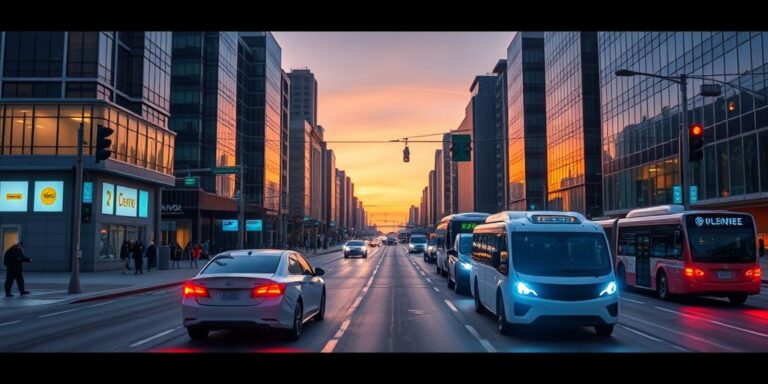The Future of Urban Mobility Services Enabled by IoT (2027)
Urban mobility is on the cusp of a revolution, driven by the proliferation of Internet of Things (IoT) devices and their seamless integration into transportation networks. By 2027, expect to see a significant transformation in how people and goods move within cities, optimizing efficiency, sustainability, and user experience.
Key Trends Shaping the Future of Urban Mobility:
- Smart Infrastructure: Cities will deploy interconnected sensors to monitor traffic flow, parking availability, and road conditions in real-time. This data will be used to optimize traffic light timings, provide dynamic routing suggestions, and proactively manage congestion.
- Autonomous Vehicles: Self-driving cars, buses, and delivery vehicles will become increasingly common. IoT-enabled vehicles will communicate with each other and with the surrounding infrastructure, enhancing safety and reducing accidents.
- Connected Public Transportation: Public transportation systems will leverage IoT to provide real-time information on schedules, routes, and occupancy levels. Passengers will be able to use mobile apps to plan their journeys, book tickets, and receive personalized alerts.
- Micro-Mobility Solutions: Shared scooters, bikes, and e-bikes will continue to grow in popularity, offering convenient and eco-friendly transportation options for short distances. IoT-enabled micro-mobility devices will be equipped with GPS tracking, anti-theft features, and remote diagnostics.
- Mobility-as-a-Service (MaaS): MaaS platforms will integrate various transportation modes into a single, user-friendly interface. Commuters will be able to plan, book, and pay for their entire journey using a single app, seamlessly combining public transportation, ride-sharing, and micro-mobility options.
Benefits of IoT-Enabled Urban Mobility:
- Reduced Congestion: Smart traffic management systems will optimize traffic flow and reduce congestion, saving commuters time and fuel.
- Improved Safety: Autonomous vehicles and advanced driver-assistance systems will significantly reduce accidents caused by human error.
- Enhanced Sustainability: Electric vehicles, optimized routing, and reduced congestion will contribute to lower emissions and a cleaner environment.
- Increased Accessibility: MaaS platforms and connected public transportation will make it easier for people of all ages and abilities to access transportation services.
- Greater Efficiency: Real-time data and predictive analytics will enable transportation providers to optimize their operations, reduce costs, and improve service quality.
Challenges and Considerations:
- Data Security and Privacy: Protecting the vast amounts of data generated by IoT devices is crucial. Robust security measures and privacy policies must be implemented to prevent data breaches and misuse.
- Interoperability: Ensuring that different IoT devices and systems can communicate with each other is essential for seamless integration and optimal performance.
- Infrastructure Investment: Cities will need to invest in upgrading their infrastructure to support the deployment of IoT-enabled mobility solutions.
- Regulatory Framework: Clear and consistent regulations are needed to govern the use of autonomous vehicles, data privacy, and other aspects of IoT-enabled urban mobility.
Conclusion:
The future of urban mobility is inextricably linked to the Internet of Things. By leveraging the power of IoT, cities can create more efficient, sustainable, and user-friendly transportation systems. While challenges remain, the potential benefits of IoT-enabled urban mobility are immense, promising to transform the way we live, work, and move within cities in the years to come.




